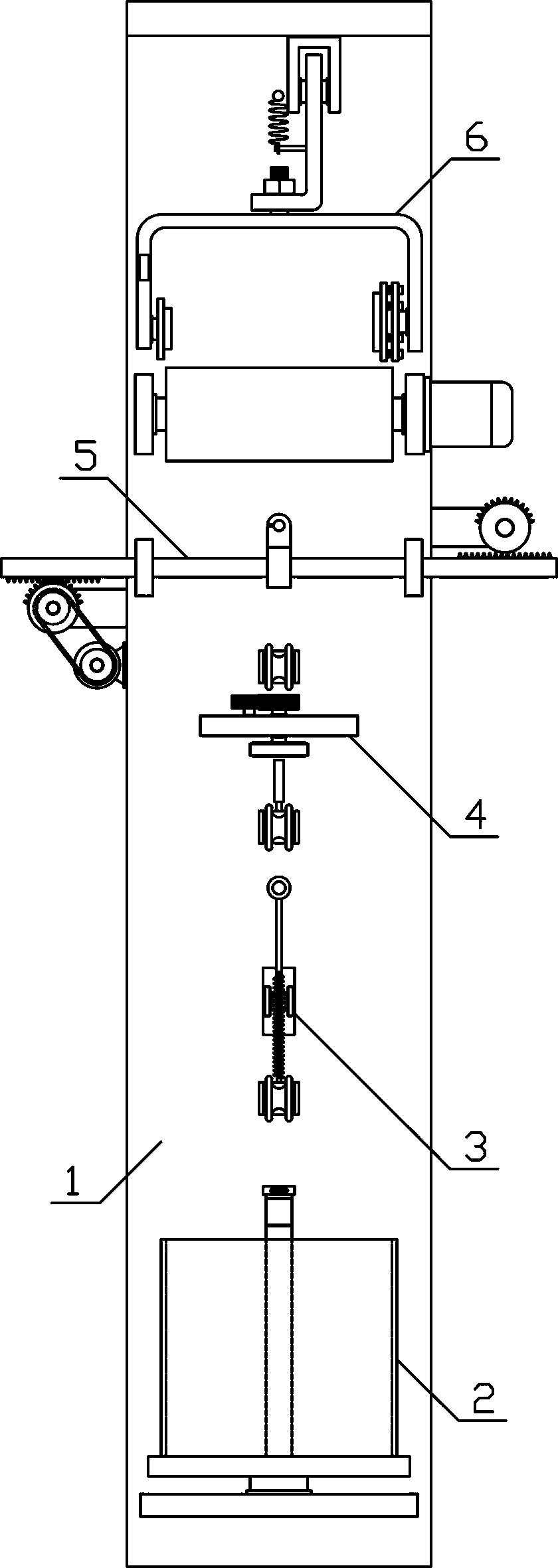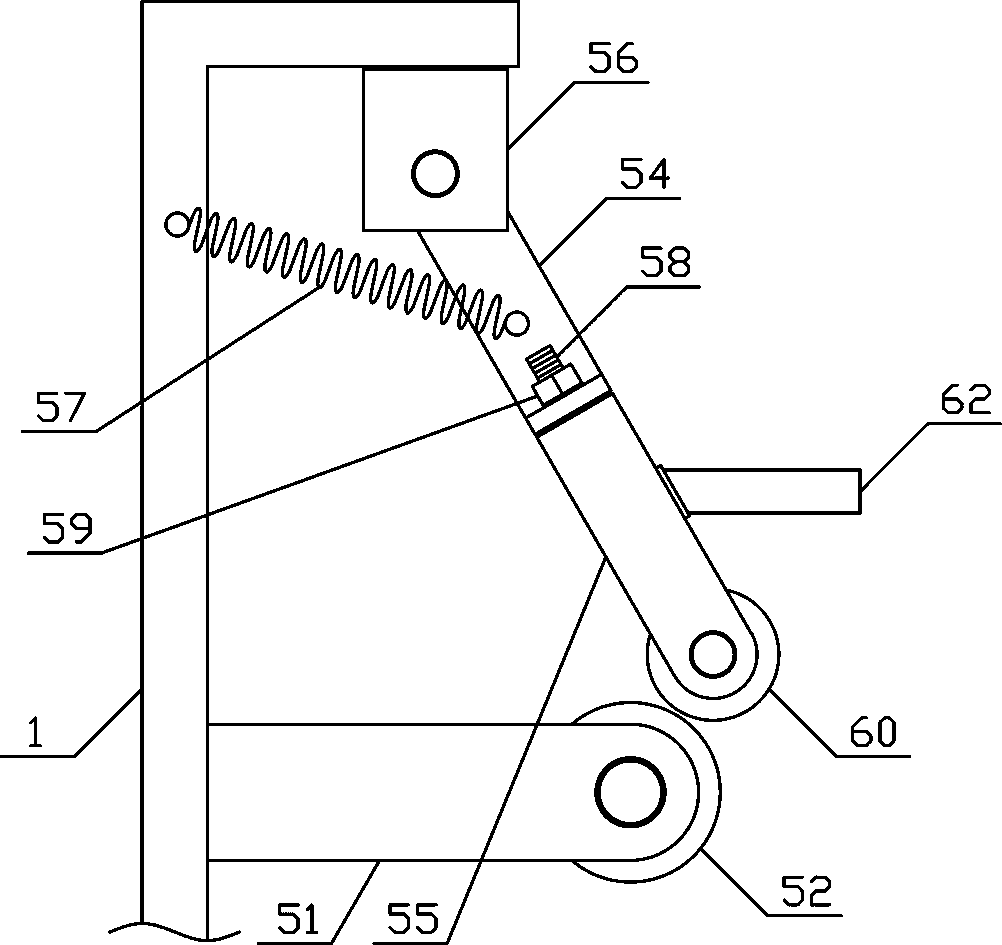Yarn continuous twisting device
A twisting device and yarn technology, applied in the direction of continuous winding spinning machines, spinning machines, textiles and papermaking, etc., can solve the problems of troublesome operation, complex structure, loose structure, etc., and achieve convenient pick-and-place fixation, Reasonable structural design, easy to pick and place
- Summary
- Abstract
- Description
- Claims
- Application Information
AI Technical Summary
Problems solved by technology
Method used
Image
Examples
Embodiment Construction
[0024] In order to further describe the present invention, a specific implementation of a yarn continuous twisting device will be further described below in conjunction with the accompanying drawings. The following examples are explanations of the present invention and the present invention is not limited to the following examples.
[0025] Such as figure 1 , figure 2 As shown, a continuous yarn twisting device of the present invention includes a fixed support 1, a yarn unwinding mechanism 2, a yarn drawing mechanism 3, a twisting mechanism 4, a yarn guide mechanism 5 and a yarn winding mechanism 6, and the yarn winding mechanism of the present invention 6. The yarn guiding mechanism 5, the twisting mechanism 4, the yarn pulling mechanism 3 and the yarn releasing mechanism 2 are fixedly arranged on one side of the fixed support 1 in sequence from top to bottom. Such as Figure 11 , Figure 12 As shown, the yarn unwinding mechanism 2 of the present invention includes a yarn...
PUM
 Login to View More
Login to View More Abstract
Description
Claims
Application Information
 Login to View More
Login to View More - R&D
- Intellectual Property
- Life Sciences
- Materials
- Tech Scout
- Unparalleled Data Quality
- Higher Quality Content
- 60% Fewer Hallucinations
Browse by: Latest US Patents, China's latest patents, Technical Efficacy Thesaurus, Application Domain, Technology Topic, Popular Technical Reports.
© 2025 PatSnap. All rights reserved.Legal|Privacy policy|Modern Slavery Act Transparency Statement|Sitemap|About US| Contact US: help@patsnap.com



